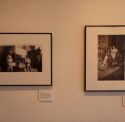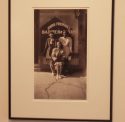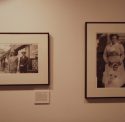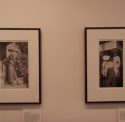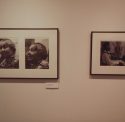A TENDER RECORD: Marjory Wilkins, Early Black & White Photographs
May 1, 2010 to May 27, 2010
Curated by Nancy Keefe Rhodes, this was an exhibit of 35 restored and finished prints of both the now extinct 15th Ward and others of historical relevance to both the African American community and the Syracuse community at large. Marjory Wilkins was an important figure in our community for over six decades, inspiring many through her camera’s view of the world. Her work was described by the exhibit curator in this way, “As documentary photographs they record history, whether recent or remote, that is ‘minority’ history – that is, history often, outside of its own community, either ignored or contested by stereotypes.” Her photography has become an invaluable resource to remember a place now destroyed, and a community with a charm and importance almost unknown to those outside of it.
In 2008, Nancy Keefe Rhodes, an arts journalist and writer for the City Eagle, received a Light Work grant to prepare an exhibit of photographs by Marjory Wilkins. As part of this project, she interviewed Mrs. Wilkins at length and with her assistance culled a selection of her early black & white photos, illustrating the premise that making photos was a substantially more wide-spread activity in the African American community than many might think. The result was an exhibition of 20 photographs at the Light Work gallery.
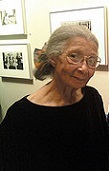
Mrs. Marjory Wilkins
The ArtRage exhibition offered, for the first time, a showing of the complete Light Work group of Wilkins’ photos. The original 20 printed for the Light Work Gallery were joined by prints of the remaining images, which have just been printed in their restored form.
There is no doubt that part of the excitement of this exhibit had to do with an area of the city that no longer exists: the 15th Ward. Marjory Wilkins’s photographs portray a once vibrant neighborhood torn down to make room for I-81 to be built through the “heart” of Syracuse. Oddly enough, it seems that the 15th Ward was itself the “heart”, and now, decades later, I-81 is still seen as a concrete scar separating the university on the hill from the city below.
At least 78 people were arrested from September 13th to 20th, 1963, for protesting the demolition of the 15th Ward. They had participated in “sit-ins” at urban renewal sites on State Street, Harrison Street and Townsend Street organized by CORE (Congress of Racial Equality) and the NAACP to stop the demolition work. Demonstrators protested the relocation of Ward residents into other “Negro” areas and low-rent districts, where 18 out of 19 landlords in Syracuse still reject a family who fill all the necessary requirements except one — the color of their skin.



